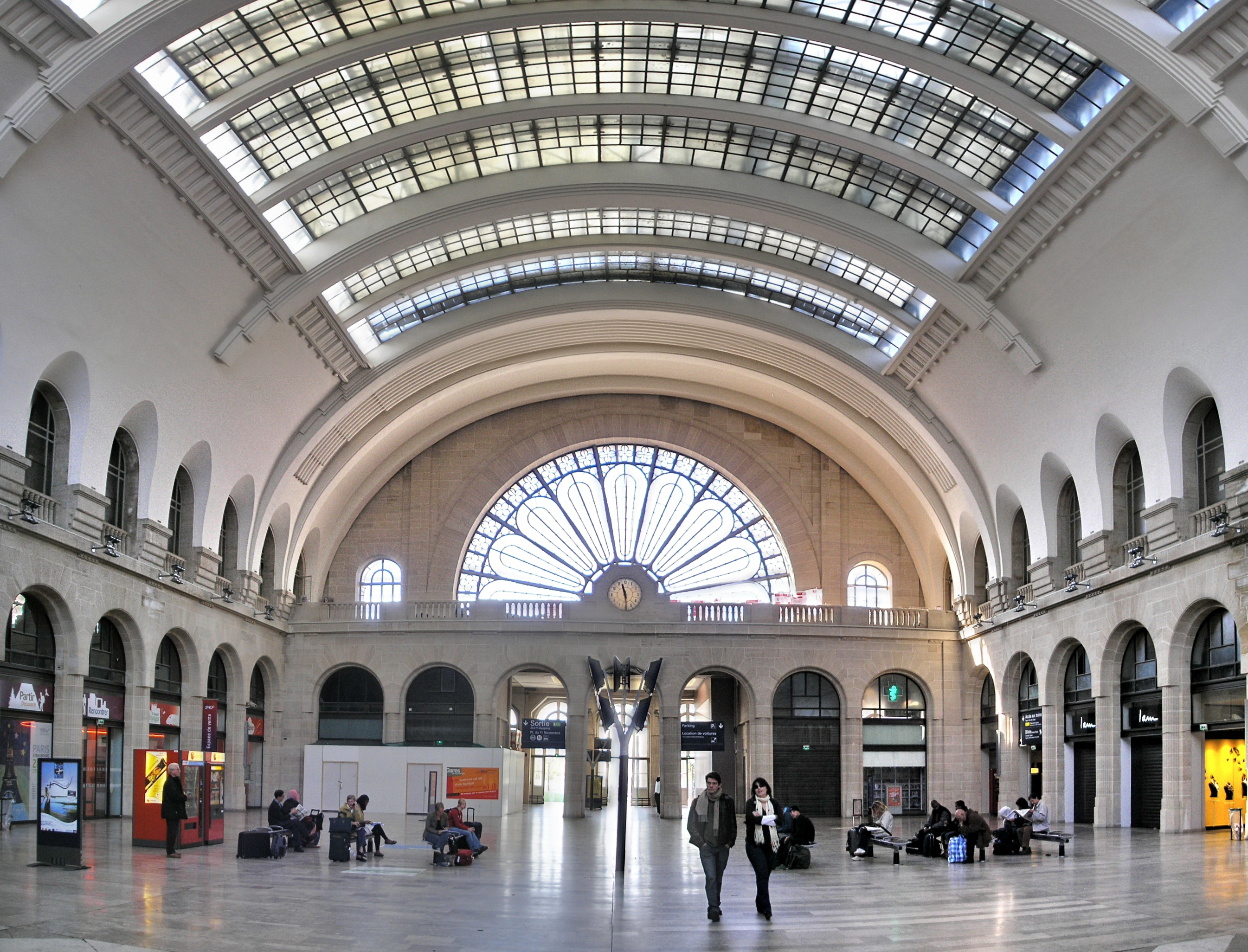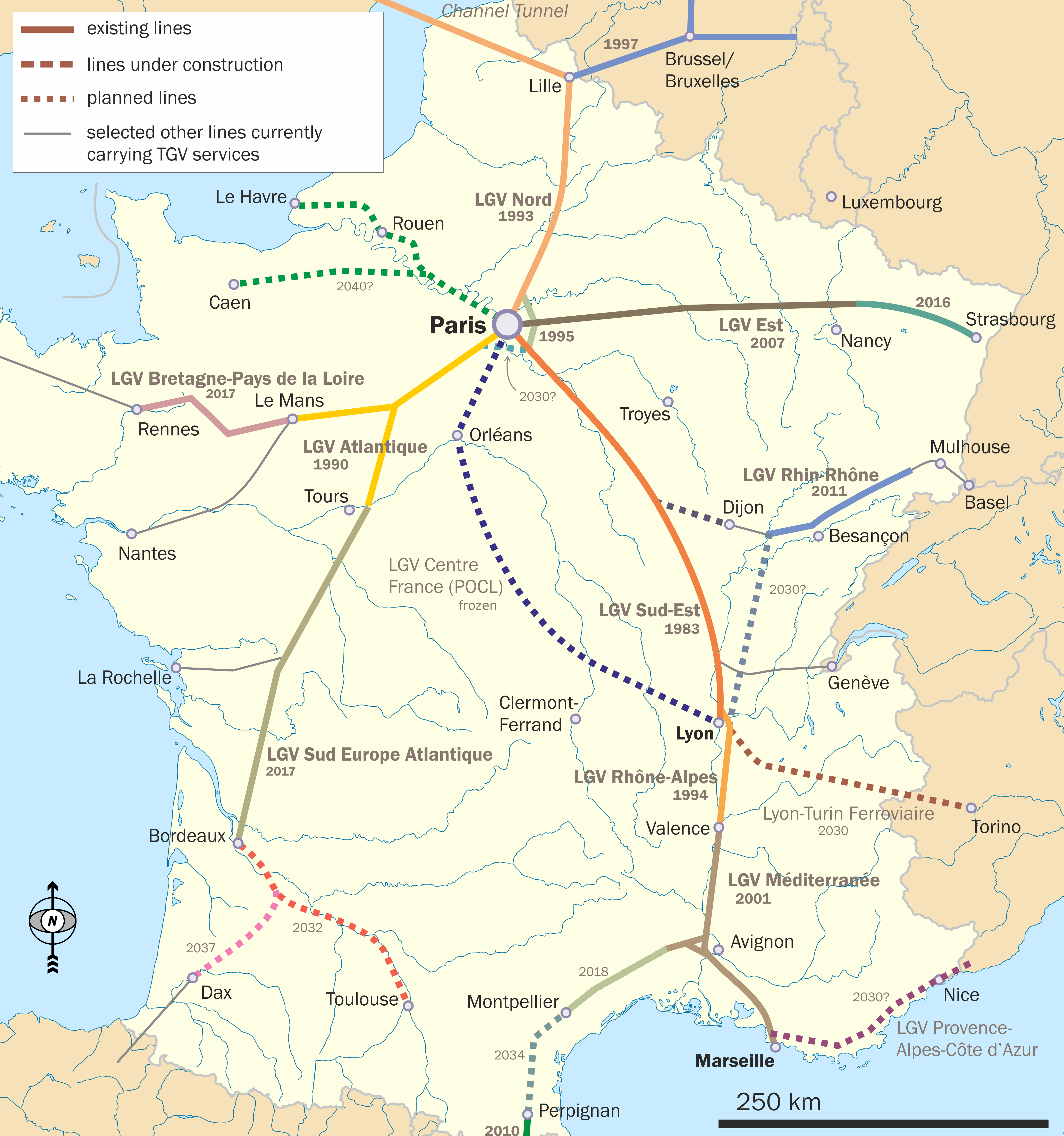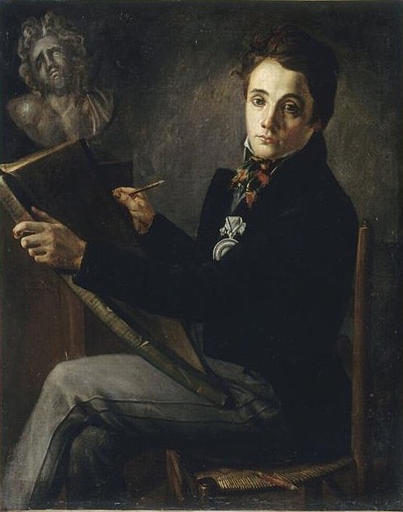|
Gare De L'Est
The Gare de l'Est (; English: "Station of the East" or "East station"), officially Paris-Est, is one of the six large mainline railway station termini in Paris, France. It is located in the 10th arrondissement, not far southeast from the Gare du Nord, facing the Boulevard de Strasbourg, part of the north-south axis of Paris created by Georges-Eugène Haussmann. Opened in 1849, it is currently the fifth-busiest of the six main railway stations in Paris before the Gare d'Austerlitz. The Gare de l'Est is the western terminus of the Paris–Strasbourg railway and Paris–Mulhouse railway which then proceeds to Basel, Switzerland. History The Gare de l'Est was opened in 1849 by the Compagnie du Chemin de Fer de Paris à Strasbourg (Paris–Strasbourg Railway Company) under the name "Strasbourg platform" (''Embarcadère de Strasbourg''); an official inauguration with President Louis Napoléon Bonaparte took place the next year. The platform corresponds today with the hall for ... [...More Info...] [...Related Items...] OR: [Wikipedia] [Google] [Baidu] |
Paris
Paris () is the capital and most populous city of France, with an estimated population of 2,165,423 residents in 2019 in an area of more than 105 km² (41 sq mi), making it the 30th most densely populated city in the world in 2020. Since the 17th century, Paris has been one of the world's major centres of finance, diplomacy, commerce, fashion, gastronomy, and science. For its leading role in the arts and sciences, as well as its very early system of street lighting, in the 19th century it became known as "the City of Light". Like London, prior to the Second World War, it was also sometimes called the capital of the world. The City of Paris is the centre of the Île-de-France region, or Paris Region, with an estimated population of 12,262,544 in 2019, or about 19% of the population of France, making the region France's primate city. The Paris Region had a GDP of €739 billion ($743 billion) in 2019, which is the highest in Europe. According to the Economist Intelli ... [...More Info...] [...Related Items...] OR: [Wikipedia] [Google] [Baidu] |
Compagnie Du Chemin De Fer De Paris à Strasbourg
The Compagnie des chemins de fer de l'Est (CF de l'Est), often referred to simply as the Est company, was an early French railway company. The company was formed in 1853 by the merger of ''Compagnie du chemin de fer de Paris à Strasbourg'', operating the Paris-Strasbourg line, and ''Compagnie du chemin de fer de Montereau à Troyes''. In 1938 it became part of the majority state-owned Société Nationale des Chemins de fer Français The Société nationale des chemins de fer français (; abbreviated as SNCF ; French for "National society of French railroads") is France's national state-owned railway company. Founded in 1938, it operates the country's national rail traffic ... (SNCF). History In 1854 the company absorbed the ''Compagnie du chemin de fer de Strasbourg à Bale'', in 1858 the Compagnie du chemin de fer de Mulhouse à Thann and in 1863 the railway network of the ''compagnie du chemin de fer des Ardennes''. Bibliography * * * * * The author reports on th ... [...More Info...] [...Related Items...] OR: [Wikipedia] [Google] [Baidu] |
LGV Est
The Ligne à Grande Vitesse Est européenne (East European High Speed Line), typically shortened to LGV Est, is a French high-speed rail line that connects Vaires-sur-Marne (near Paris) and Vendenheim (near Strasbourg). The line halved the travel time between Paris and Strasbourg and provides fast services between Paris and the principal cities of Eastern France as well as Luxembourg, Germany and Switzerland. The LGV Est is a segment of the Main Line for Europe project to connect Paris with Budapest with high-speed rail service. The line was built in two phases. Construction on the from Vaires-sur-Marne to Baudrecourt (near Metz and Nancy) began in 2004; the first phase entered into service in June 2007. Construction on the second phase from Baudrecourt to Vendenheim began in June 2010; the second phase opened to commercial service on 3 July 2016. Opening of the second phase was delayed after a train derailed near Eckwersheim during commissioning trials, resulting in 11 de ... [...More Info...] [...Related Items...] OR: [Wikipedia] [Google] [Baidu] |
Le Départ Des Poilus, Août 1914
''Le Départ des poilus, août 1914'' (French: ''Departure of the Infantrymen, August 1914'') is a monumental mural by the American artist Albert Herter. The painting measures and is displayed at the Gare de l'Est railway station in Paris, where it is suspended some high on a wall in the Hall d'Alsace. Herter's work was intended as a memorial to his elder son Everit, also a painter, who volunteered to join the US Army in September 1917, some months after the US joined the First World War. Everit Herter joined the camouflage section of the United States Army Corps of Engineers. Sergeant Herter was killed in June 1918 near Château-Thierry in Aisne, while serving in France with the American Expeditionary Force, and is buried in the Aisne-Marne American Cemetery. He had spent time in Europe with his parents before the war, including a period studying at a secondary school in France. Herter channelled his grief into this mural, which depicts many ''poilus'' (French infantrym ... [...More Info...] [...Related Items...] OR: [Wikipedia] [Google] [Baidu] |
Albert Herter
Albert Herter (March 2, 1871 – February 15, 1950) was an American painter, illustrator, muralist, and interior designer. He was born in New York City, studied at the Art Students League with James Carroll Beckwith, then in Paris with Jean-Paul Laurens and Fernand Cormon. He came from an artistic family; his father, Christian Herter (1839–1883), had co-founded Herter Brothers, a prominent New York interior design and furnishings firm. Herter Brothers closed in 1906, and Albert founded Herter Looms in 1909, a tapestry and textile design-and-manufacturing firm that was, in a sense, successor to his father's firm. Personal In Paris, he met a fellow American art student, Adele McGinnis. They were married in 1893 and had three children: Everit Albert (1894–1918), Christian Archibald (1895–1966), and Lydia Adele (1898–1951). The couple honeymooned in Japan, then returned to Paris for the first years of their marriage. In 1898 they moved back to the United St ... [...More Info...] [...Related Items...] OR: [Wikipedia] [Google] [Baidu] |
World War I
World War I (28 July 1914 11 November 1918), often abbreviated as WWI, was one of the deadliest global conflicts in history. Belligerents included much of Europe, the Russian Empire, the United States, and the Ottoman Empire, with fighting occurring throughout Europe, the Middle East, Africa, the Pacific, and parts of Asia. An estimated 9 million soldiers were killed in combat, plus another 23 million wounded, while 5 million civilians died as a result of military action, hunger, and disease. Millions more died in genocides within the Ottoman Empire and in the 1918 influenza pandemic, which was exacerbated by the movement of combatants during the war. Prior to 1914, the European great powers were divided between the Triple Entente (comprising France, Russia, and Britain) and the Triple Alliance (containing Germany, Austria-Hungary, and Italy). Tensions in the Balkans came to a head on 28 June 1914, following the assassination of Archduke Franz Ferdin ... [...More Info...] [...Related Items...] OR: [Wikipedia] [Google] [Baidu] |
Strategic Railway
A strategic railway is a railway proposed or constructed primarily for military strategic purposes, as opposed to the usual purpose of a railway, which is the transport of civilian passengers or freight. Although the archetypal strategic railway would be one constructed ''solely'' as part of a military strategy, such a railway has only ever existed in theory. Thus, a strategic railway is, in practice, one for which any intended or contemplated civilian purpose is subordinate to the military strategic purpose. Strategic railways are not to be confused with military railways, which can take several different forms. A military railway is established or operated not as a strategic measure, but for tactical, training or logistical purposes. However, it is possible for a railway to be proposed or constructed for more than one military purpose, including a strategic purpose. An example of such a railway is the notorious Burma Railway, the hasty construction of which was as much a st ... [...More Info...] [...Related Items...] OR: [Wikipedia] [Google] [Baidu] |
Constantinople
la, Constantinopolis ota, قسطنطينيه , alternate_name = Byzantion (earlier Greek name), Nova Roma ("New Rome"), Miklagard/Miklagarth (Old Norse), Tsargrad ( Slavic), Qustantiniya (Arabic), Basileuousa ("Queen of Cities"), Megalopolis ("the Great City"), Πόλις ("the City"), Kostantiniyye or Konstantinopolis ( Turkish) , image = Byzantine Constantinople-en.png , alt = , caption = Map of Constantinople in the Byzantine period, corresponding to the modern-day Fatih district of Istanbul , map_type = Istanbul#Turkey Marmara#Turkey , map_alt = A map of Byzantine Istanbul. , map_size = 275 , map_caption = Constantinople was founded on the former site of the Greek colony of Byzantion, which today is known as Istanbul in Turkey. , coordinates = , location = Fatih, İstanbul, Turkey , region = Marmara Region , type = Imperial city , part_of = , length = , width ... [...More Info...] [...Related Items...] OR: [Wikipedia] [Google] [Baidu] |
Orient Express
The ''Orient Express'' was a long-distance passenger train service created in 1883 by the Belgian company ''Compagnie Internationale des Wagons-Lits'' (CIWL) that operated until 2009. The train traveled the length of continental Europe and into western Asia, with terminal stations in Paris and London, England, London in the northwest and Athens, Greece, Athens or Istanbul, Turkey, Istanbul in the southeast. The route and rolling stock of the ''Orient Express'' changed many times. Several routes in the past concurrently used the ''Orient Express'' name, or slight variations. Although the original ''Orient Express'' was simply a normal international railway service, the name became synonymous with intrigue and luxury trains, luxury rail travel. The two city names most prominently served and associated with the ''Orient Express'' are Paris and Istanbul, the original endpoints of the timetabled service. The ''Orient Express'' was a showcase of luxury and comfort at a time when trav ... [...More Info...] [...Related Items...] OR: [Wikipedia] [Google] [Baidu] |
Verdun
Verdun (, , , ; official name before 1970 ''Verdun-sur-Meuse'') is a large city in the Meuse department in Grand Est, northeastern France. It is an arrondissement of the department. Verdun is the biggest city in Meuse, although the capital of the department is Bar-le-Duc, which is slightly smaller than Verdun. It is well known for giving its name to a major battle of the First World War. Geography Verdun is situated on both banks of the river Meuse, in the northern part of the Meuse department. It is connected by rail to Jarny. The A4 autoroute Paris–Metz–Strasbourg passes south of the town. History Verdun (''Verodunum'', a latinisation of a place name meaning "strong fort" in Gaulish) was founded by the Gauls. It has been the seat of the bishop of Verdun since the 4th century, with interruptions.A History of Food, Maguelonne Toussaint-Samat, Blackwell Publishing 1992, p.567 In 486, following the decisive Frankish victory at the Battle of Soissons, the city (amon ... [...More Info...] [...Related Items...] OR: [Wikipedia] [Google] [Baidu] |
Strasbourg
Strasbourg (, , ; german: Straßburg ; gsw, label=Bas Rhin Alsatian, Strossburi , gsw, label=Haut Rhin Alsatian, Strossburig ) is the prefecture and largest city of the Grand Est region of eastern France and the official seat of the European Parliament. Located at the border with Germany in the historic region of Alsace, it is the prefecture of the Bas-Rhin department. In 2019, the city proper had 287,228 inhabitants and both the Eurométropole de Strasbourg (Greater Strasbourg) and the Arrondissement of Strasbourg had 505,272 inhabitants. Strasbourg's metropolitan area had a population of 846,450 in 2018, making it the eighth-largest metro area in France and home to 14% of the Grand Est region's inhabitants. The transnational Eurodistrict Strasbourg-Ortenau had a population of 958,421 inhabitants. Strasbourg is one of the ''de facto'' four main capitals of the European Union (alongside Brussels, Luxembourg and Frankfurt), as it is the seat of several European insti ... [...More Info...] [...Related Items...] OR: [Wikipedia] [Google] [Baidu] |
Philippe Joseph Henri Lemaire
Philippe Joseph Henri Lemaire (9 January 1798, Valenciennes - 2 August 1880, Paris) was a French sculptor, working in a neoclassical academic style. Life and career He was a pupil of Pierre Cartellier, and won the Prix de Rome for sculpture in 1821. Lemaire sculpted the high relief of the Last Judgment for the pediment of the Église de la Madeleine, Paris. He is among the major academic sculptors of France who are represented in the sculpture of the Arc de Triomphe, Paris: the others are Jean-Pierre Cortot, François Rude, Antoine Étex, and James Pradier. His bronze monument for the city of Quimper, commemorating the Breton Napoleonic hero and antiquarian, Théophile Corret de la Tour d'Auvergne, was melted down during World War II. Selected works File:Lille PdBA lemaire napoleon.JPG, Napoleon at the Palais des Beaux-Arts de Lille. Image:Claude Louis Constant Corbineau.jpg, Portrait bust of Claude Corbineau Image:Paryż magdalena fasada.JPG, Detail of the pedimen ... [...More Info...] [...Related Items...] OR: [Wikipedia] [Google] [Baidu] |










